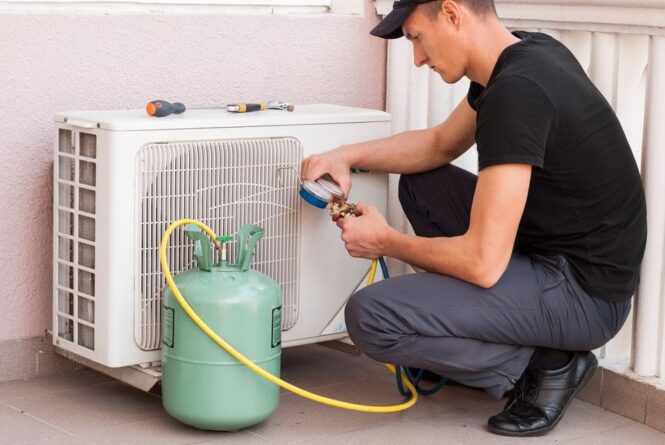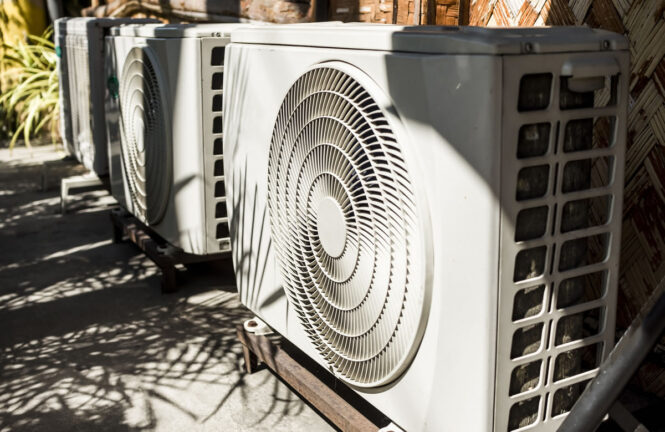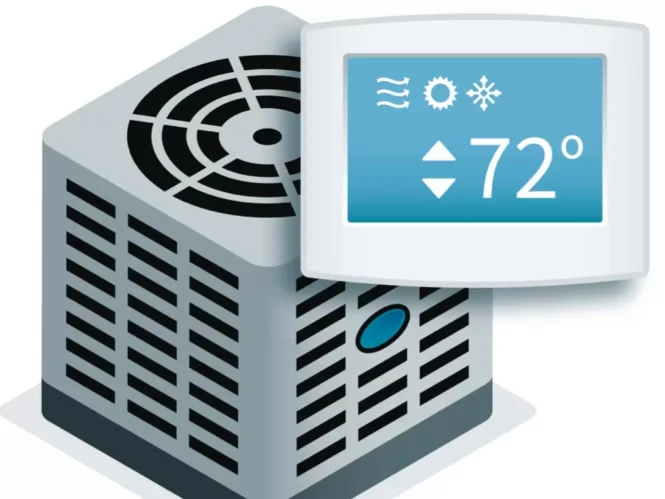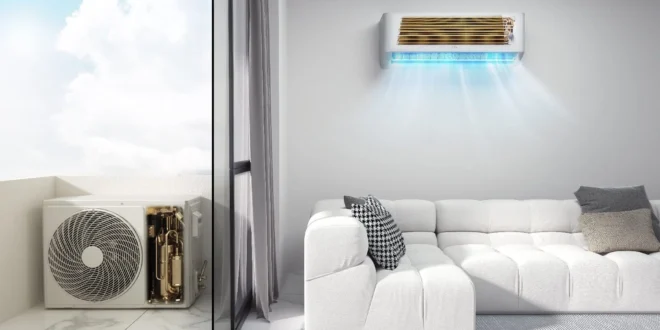Air conditioning is a technology that regulates the temperature, humidity, and air quality within indoor spaces. It has become an integral part of our daily lives, providing comfort in homes, offices, and vehicles. The science behind air conditioning involves principles from thermodynamics, fluid mechanics, and heat transfer. This article will break down the key components and processes involved in creating the comfortable indoor environments we often take for granted.
Core Components
Refrigerants:

Refrigerants form the cornerstone of air conditioning systems, acting as efficient heat manipulators. Commonly used examples include hydrofluorocarbons (HFCs) and hydrochlorofluorocarbons (HCFCs). These substances have the remarkable ability to absorb and release heat. As the air conditioning process unfolds, the refrigerant undergoes a continuous cycle, transitioning from a low-pressure gas to a high-pressure liquid and vice versa. This fluid movement is integral to the system’s ability to regulate temperature effectively.
Compressor:
The compressor assumes a pivotal role in the air conditioning mechanism. This component is responsible for pressurising the refrigerant, instigating a transformative process. As the refrigerant undergoes compression, it evolves into a hot, high-pressure gas. This newly formed gas is then directed towards the condenser, marking a crucial phase in the cycle.
Condenser:
The condenser represents a vital stage where the hot, high-pressure gas relinquishes its accumulated heat to the surrounding environment. During this exchange, the gas undergoes a transition, converting into a high-pressure liquid. This condensed liquid, now laden with the absorbed heat, progresses to the subsequent stage involving the expansion valve.
Expansion Valve:
The expansion valve plays a key role in regulating the pressure of the refrigerant, facilitating its transition from a high-pressure liquid to a low-pressure gas. This controlled reduction in pressure prompts the refrigerant to evaporate, a process that involves absorbing heat from the indoor air. The resultant low-pressure gas then completes the cycle by returning to the compressor, ready to recommence the journey through the air conditioning system.
In essence, the orchestration of these core components orchestrates a continuous, cyclical dance within an air conditioner, allowing for the efficient regulation of indoor temperature and the creation of a comfortable environment. Each element performs a specific function, contributing harmoniously to the overall efficacy of the cooling process.
The Cooling Cycle
1. Compression:

The initial phase of the air conditioning process is characterised by compression, where the compressor assumes a central role. Operating on a low-pressure, low-temperature gas, the compressor elevates its pressure, consequently raising its temperature. This pressurisation sets the stage for the subsequent steps in the cooling cycle.
2. Condensation:
Following compression, the heated, high-pressure gas proceeds to the condenser. Here, an essential exchange occurs as heat is discharged to the surroundings. This thermal release induces a noteworthy transformation in the refrigerant, prompting it to shift from a gaseous state to a liquid state. The condensation process is critical as it signifies the transfer of heat away from the refrigerant, a pivotal step in preparing it for the subsequent stages of the cycle.
3. Expansion:
The refrigerant, now in its condensed liquid state, advances to the expansion valve. In this phase, the valve meticulously reduces the pressure of the liquid, initiating a controlled expansion. As the pressure decreases, the refrigerant undergoes a transition into a low-pressure gas. This orchestrated reduction in pressure sets the stage for the refrigerant to efficiently absorb heat during the upcoming phase.
4. Evaporation:
The final stage, evaporation, transpires as the low-pressure gas, enriched with the absorbed heat, returns to the compressor. This marks the completion of a full cycle, positioning the system to commence the process anew. The low-pressure gas, having released its absorbed heat, is once again primed for compression, recommencing the cyclical journey through the air conditioning system.
In essence, these sequential phases – compression, condensation, expansion, and evaporation – form an intricately linked series of events that collectively define the cooling cycle. This systematic progression is orchestrated with precision to facilitate the efficient regulation of temperature within indoor spaces, contributing to the overall comfort and well-being of occupants.
Additional Features in an Air Conditioner
Air Handling Unit (AHU):

An integral component of air conditioning systems, the Air Handling Unit (AHU) is a sophisticated apparatus designed to enhance the efficiency of the cooling process. Within the confines of the AHU, two key elements play pivotal roles: the blower and the evaporator coil. The blower, acting as a propellant, facilitates the circulation of air over the evaporator coil. This strategic movement of air serves a dual purpose: cooling and dehumidification. As the air traverses the evaporator coil, it undergoes a process of temperature reduction and moisture removal, contributing significantly to the creation of a comfortable indoor environment.
Thermostat:
The thermostat assumes a commanding role in the air conditioning system, functioning as the control centre for temperature regulation. Operating based on the desired temperature set by occupants, the thermostat orchestrates the activation or deactivation of the compressor. This dynamic control mechanism ensures that the air conditioning system responds promptly and accurately to the preferences of its users. The thermostat’s precision in temperature management is pivotal in maintaining a consistent and comfortable atmosphere within the designated indoor space.
Ductwork:
Ductwork serves as the circulatory system of an air conditioning system, playing a crucial role in the even distribution of conditioned air throughout a building. Designed with precision, ducts are configured to carry cooled or heated air to various areas, guaranteeing a uniform temperature profile. The efficiency of ductwork is instrumental in eliminating temperature disparities within a structure, ensuring that every corner receives an optimal share of conditioned air. This systematic distribution not only enhances comfort but also contributes to energy efficiency by minimising wastage and promoting a balanced utilisation of the conditioned air.
These additional features complement the core components of an air conditioning system, working synergistically to optimise performance, enhance user comfort, and ensure a consistent and evenly regulated indoor environment. The careful integration of the Air Handling Unit, thermostat, and ductwork underscores the holistic approach to temperature control within modern buildings.
Summary
To sum up, Understanding the science behind air conditioning helps us appreciate the complexity and innovation involved in creating comfortable indoor environments. As technology continues to evolve, the future may bring even more efficient and sustainable cooling solutions.
 Imagup General Magazine 2024
Imagup General Magazine 2024



